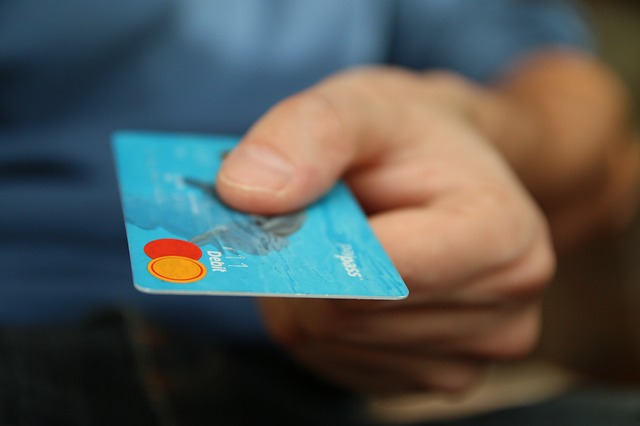|
Spring — with new life popping up everywhere — is the source of many an
impulse to start afresh. The spring cleaning tradition reaches back a long way, and you can apply it to the mess of files and financial records — paper and virtual — piled up in your life. to start afresh. The spring cleaning tradition reaches back a long way, and you can apply it to the mess of files and financial records — paper and virtual — piled up in your life.
Here’s how to get going:
1. Set a goal
A project like spring cleaning can eat you alive if you don’t set limits. Decide what you want to accomplish. You can always return to the job next week or next year, so make it manageable. Some ideas include:
- Clear out two years’ worth of old tax documents.
- Sort through one or two boxes of old papers or file cabinet drawers.
- Clean out the closet stuffed with old papers.
Watch the video of ‘8 Smart Ways to Spring Clean Your Finances’ on MoneyTalksNews.com.
2. Know how long to keep paperwork
Don’t get carried away and toss everything. Here’s what to keep, and for how long:
Copies of your tax returns. Keep these forever. “They help in preparing future tax returns and making computations if you file an amended return,” the IRS says. Also, old tax returns offer proof — should you ever need it — that you filed taxes in those years.
Supporting tax documents and receipts . The IRS recommends keeping supporting documents for as long as you can be audited or held responsible for the filings. Here are a few rules of thumb:
- The IRS says it generally audits taxes back three years, so keep records supporting deductions at least three years after a return was due or filed. However, the IRS also says: “If we identify a substantial error, we may add additional years. We usually don’t go back more than the last six years.” So you may want to hold onto records for six years to be sure you’re covered.
- Keep payroll tax records six years.
- If you filed a fraudulent tax return, you’re on the hook forever, so hold onto supporting documents.
- If you failed to report income worth more than 25 percent of the gross amount you reported, you’re liable to the IRS for six years.
Documents to support an insurance claim. Ask your home-, rental- or auto-insurance companies or agents which documents you should keep — and how long to hold them — in case you need documentation later to substantiate a claim.
3. Discard papers if you have stored electronic copies
Before tossing documents, check with banks and financial services companies — including your 401(k) provider — to learn how long they retain electronic copies of your records.
4. Back up
Download electronic copies of bank and insurance records and other important documents to your computer. Back them up onto a separate hard drive or cloud storage.
It’s smart to have backups for your backups. Use a second hard drive or buy a subscription to an always-on backup service that constantly copies your entire computer’s contents to secure cloud storage.
5. Decide what to shred
Some paper items — such as old newspapers and instruction manuals for things you no longer own — can be tossed into recycling. But don’t risk identity theft by throwing documents containing personal or sensitive information into the trash. Shred them instead. Such documents include:
- Utility bills
- Receipts
- Reconciled bank statements
- Canceled checks
- Correspondence — unless it’s really precious
Few people are willing to shred years’ worth of documents at home. But if you are one of them, give your shredder frequent rests to prevent overheating. Oil the cutting mechanism often, or use shredder lubrication sheets. Read the manufacturer’s instructions before testing your shredder’s limits.
6. Buy a scanner and use it daily
Get into the practice of scanning and then shredding documents you want to retain. Organize your computer files so you can easily drop them into the right folders.
7. Make an insurance inventory
Renters and homeowners alike benefit from creating an inventory of possessions. Technology makes the job fairly simple:
- Use your smartphone to photograph every possession in your home for which you’d want to make an insurance claim if it was stolen or damaged. Even simpler, take a video while walking through the home as you point out items and describe their value.
- Document room by room. Include the home itself, inside and out. Document vehicles, car accessories and interior furnishings, sports equipment, outdoor furniture, toys and structures.
- Record the amount you paid for each item and, if possible, when you purchased it. Write it on the back of each photo or connect the information with the photos on your computer.
- Starting now, photograph new possessions as you obtain them. Save their receipts with your inventory.
8. Scrutinize your bank accounts — and shop for new ones
Take a yearly look at your bank accounts. If you have too many, close the inactive ones. Shred unused checks and registers from old accounts.
There’s no excuse for paying fees or getting a low interest rate on your account. Use our Solutions Center to find a better rate on a savings account.
This article originally published on Finance.Yahoo.com by Marilyn Lewis
Posted Thursday, March 29 2018 11:00 AM
Tags : 8 Smart Ways to Spring Clean Your Finances
|